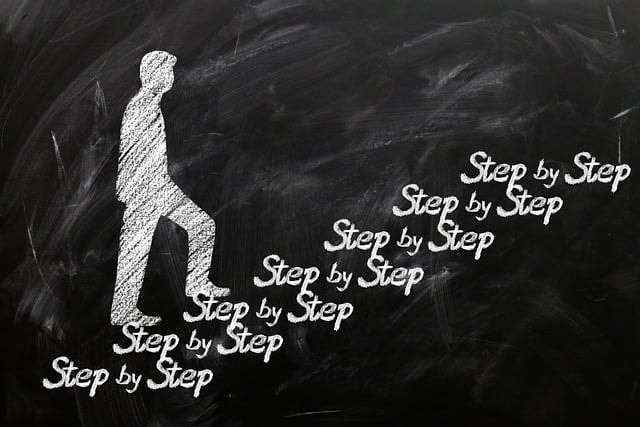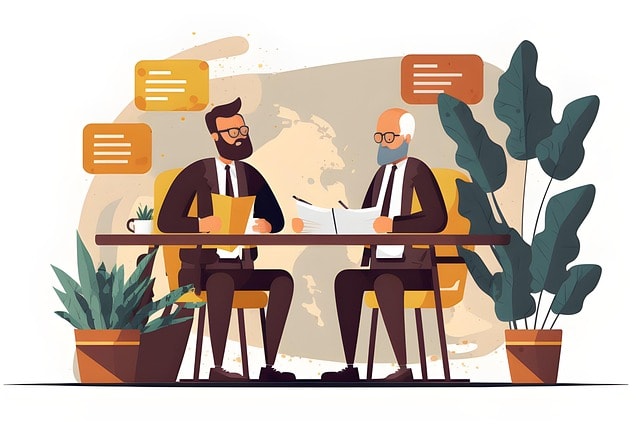EEOC mediation, including the EEOC’s mediation program, is a way to resolve workplace disputes quickly and without going to court. But how does it work, and why should you consider it? This guide will walk you through the process and its benefits, helping you get started on the right foot.
Key Takeaways
- EEOC mediation is a quick, voluntary process helping both parties resolve disputes without the long wait of litigation.
- The benefits of EEOC mediation include cost savings, confidentiality, and the potential for more amicable resolutions.
- Preparation is key: gathering evidence and having legal representation can significantly boost chances of a favorable outcome.
Understanding the EEOC Mediation Process

The EEOC mediation process is a voluntary alternative dispute resolution method offered by the Equal Employment Opportunity Commission (EEOC) to help parties reach an agreement without going through traditional investigative or litigation processes. Implemented nationally in 1999, the EEOC’s mediation program has provided a framework for addressing employment disputes at an earlier stage, potentially saving both time and resources. Additionally, the EEOC’s mediation has proven effective in facilitating resolutions.
One of the primary reasons the EEOC encourages mediation early in the process is to conserve resources and avoid entrenching positions. Addressing disputes before they escalate through mediation fosters a more collaborative and less adversarial resolution, benefiting both parties involved.
But what exactly does the EEOC mediation process entail? Here’s a step-by-step breakdown, from the initial invitation to mediate to the final mediation session.
Steps in the EEOC Mediation Process
The EEOC mediation process begins with an invitation to mediate, which is sent to the respondent. The respondent typically has 15 days to respond to the invitation, though this period can be flexible based on the needs of the parties involved. Once both parties agree to mediate, the EEOC assigns a neutral mediator to the case.
The mediation session starts with the mediator explaining the procedure and allowing each party to determine their positions. This initial phase sets the tone for the discussion and helps identify key issues.
During the mediation, the charging party explains the reasons for filing the complaint and their desired outcomes. Mediation sessions typically last around 3 to 4 hours, providing ample time for both parties to discuss their perspectives and negotiate a resolution. A range of settlement options, including both monetary and non-monetary agreements, can be explored during mediation.
If a resolution is reached, the parties will draft and sign a Mediation Settlement Agreement (MSA), which is legally binding. This agreement ensures that the terms agreed upon are enforceable, providing a clear path forward for both parties that is resolved.
How Long Does EEOC Mediation Take?
One of the most appealing aspects of the EEOC mediation process is its relatively short duration compared to traditional investigations or litigation, which can be quite time consuming. Mediation sessions usually last about 3 to 4 hours, though the exact time can vary based on the specifics of the case. The overall resolution timeframe following mediation is typically around 84 days, making it significantly faster than the average ten months or more that investigations can take.
The efficiency of this process not only saves time but also reduces the emotional and financial stress associated with prolonged dispute resolution. In some cases, more than one mediation session may be required, especially if the issues are particularly complex. However, the goal is always to reach a resolution as quickly and amicably as possible, ensuring that both parties can move forward without the lingering burden of unresolved disputes.
EEOC’s Mediation Goals
The Equal Employment Opportunity Commission’s (EEOC) mediation program is designed to provide a fair, efficient, and cost-effective way to resolve employment discrimination charges. The primary goal of the EEOC’s mediation process is to bring parties together to discuss and resolve charges of employment discrimination, promoting a mutually beneficial outcome. By facilitating early resolution, the EEOC aims to avoid the need for lengthy investigations or litigation, which can be time-consuming and costly for both parties. This approach not only conserves resources but also fosters a more collaborative and less adversarial environment, helping to maintain positive workplace relationships. The EEOC’s mediation program ultimately seeks to create a more efficient and effective dispute resolution process, reducing the burden on employers and employees alike.
Benefits of Participating in EEOC Mediation

The EEOC mediation process offers numerous benefits for both employees and employers. It provides a no-cost resolution method for employees, a significant advantage compared to the high costs of litigation. Employers also see mediation as a necessary method for resolving disputes without substantial expenses.
Mediation helps avoid the stress and time typically associated with a lawsuit, allowing both parties to focus on finding a mutually satisfactory resolution. Additionally, the confidentiality of the mediation process ensures that discussions and agreements remain private, fostering a more open and constructive dialogue.
Moreover, mediation resolves disputes amicably, catering to the specific needs of the parties involved. This personalized approach often leads to more satisfactory outcomes, reducing the chances of future conflicts. The EEOC mediation process is highly successful, with a long track record of resolving over 72% of cases favorably, making it a preferred method for resolving workplace disputes.
Cost Savings and Efficiency
One of the most significant benefits of the EEOC mediation process is the potential for cost savings. Pursuing disputes through litigation can be extremely expensive, with costs escalating substantially as the case progresses. In contrast, mediation offers a viable alternative that can help parties avoid these high costs.
For instance, settlements in discrimination claims can reach at least one million dollars in cases at the top tenth percentile, underscoring the potential savings through mediation and money. Many employers perceive mediation as a settlement conference primarily aimed at achieving a monetary settlement, which influences their decision to participate. Additionally, securing an attorney can lead to better outcomes in mediation, as competent representation fosters serious negotiations.
The efficiency of the mediation process is also noteworthy. The average time for resolution after EEOC mediation meetings is approximately 84 days, demonstrating the speed and effectiveness of this alternative dispute resolution method and the potential for positive EEOC mediation outcomes.
Confidentiality and Voluntary Participation
Confidential is a cornerstone of the EEOC mediation process. Strict confidentiality agreements ensure that what is discussed during mediation cannot be disclosed or used in subsequent investigations. This confidentiality agreement makes parties feel secure to speak openly, fostering a more productive and honest dialogue.
Another key aspect of EEOC mediation is its completely voluntary nature. Participation in mediation is entirely voluntary, and either party can opt out at any time without facing any consequences. This voluntary participation ensures that both parties are genuinely interested in resolving the dispute.
Importantly, participants do not forego their rights as claimants by participating in mediation with a neutral third party. They maintain their ability to pursue other options if mediation does not result in a satisfactory resolution.
Mediation Success Rates
The EEOC’s mediation program boasts a high success rate, with over 70% of mediations resulting in a successful resolution. This impressive success rate underscores the effectiveness of the EEOC’s mediation process in resolving employment discrimination charges. The key to this success lies in the role of neutral third-party mediators who facilitate discussions and negotiations between the parties. These skilled mediators help identify common goals and interests, guiding the parties toward a mutually beneficial outcome. The high success rate of the EEOC’s mediation program highlights the value of alternative dispute resolution in addressing employment discrimination, providing a practical and efficient solution for both employees and employers.
Preparing for EEOC Mediation
Proper preparation is crucial for a successful EEOC mediation. The EEOC provides information and assesses the willingness of both parties to participate. Ensuring that both parties, including the charging parties, are eligible for mediation based on the charge’s specifics is a critical first step.
Clear objectives for what you want to achieve during mediation can significantly enhance your chances of a reasonable outcome. Approaching mediation with realistic expectations and the understanding that compromise may be necessary is important.
Moreover, employees without legal counsel may find themselves at a disadvantage during mediation, as employers typically come prepared with their own legal representation. Charging parties should consider obtaining legal representation to level the playing field and improve their chances of a favorable outcome.
Gathering Evidence and Documentation
Gathering evidence and documentation is vital for preparing for EEOC mediation. Employers should compile a detailed position statement outlining their defenses, along with supporting documentation to present all relevant facts during the mediation session.
Organizing all relevant evidence ahead of time can significantly enhance your case during mediation. Collecting documents and evidence that support your claims is essential to making a strong case and achieving a favorable outcome.
Understanding Legal Rights and Representation
Consulting with legal counsel is crucial for understanding your rights within the EEOC mediation process. Legal representation can enhance negotiation strategies and increase the likelihood of a favorable outcome.
When choosing an attorney for EEOC cases, look for someone with experience in employment law and a track record of successful mediation. An attorney skilled in employment law can prepare effective strategies to counter employer defenses and safeguard your rights and interests.
The Importance of Reasonable Cause
Reasonable cause is a critical factor in the EEOC’s mediation process. During the investigation process, the EEOC determines whether there is reasonable cause to believe that discrimination occurred. If reasonable cause is found, the EEOC will issue a determination, which can lead to a lawsuit. The EEOC’s mediation program offers an opportunity for parties to resolve charges before a determination is made, thereby avoiding the need for a lengthy investigation. This highlights the importance of addressing allegations of discrimination promptly and proactively. Employers should take steps to prevent employment discrimination and respond swiftly to any claims, as doing so can help resolve issues before they escalate to the point of requiring a formal investigation or litigation.
Common Outcomes of EEOC Mediation

EEOC mediation is designed to resolve disputes effectively, yet concerns about outcomes persist among some participants. If a settlement is achieved during EEOC mediation, a document known as a Mediation Settlement Agreement (MSA) is produced. This agreement must be signed by both parties involved. This agreement is legally binding, ensuring that the terms agreed upon are enforceable.
Mediation allows parties to reach mutually beneficial resolutions, reducing the need for lengthy investigations. While some participants may have concerns about mediation outcomes, many find that mediations offer a practical and efficient way for mediators to resolve disputes. Over 72% of cases have been successfully resolved since the program’s inception, highlighting the effectiveness of EEOC mediation.
Average Settlement Amounts
The average settlement amount for workplace discrimination claims in EEOC mediation varies widely by region and industry. On the whole, it is more than $10,000.00. Many of these cases are settled through mediation rather than going to trial, providing crucial insight for both parties involved in disputes and helping them set realistic expectations for the mediation process.
Legally Binding Agreements
Any agreement reached during mediation is legally binding and can be enforced in court. This legal enforceability ensures that both parties comply with the terms of the agreement, providing a clear resolution to the dispute.
Mediation Program Effectiveness
The EEOC’s mediation program is highly effective in resolving employment discrimination charges. It provides a cost-effective and efficient way to address disputes, avoiding the need for lengthy investigations or litigation. The program also promotes a more positive and productive workplace environment, as parties work together to resolve their differences. The effectiveness of the EEOC’s mediation program can be attributed to the skilled mediators who facilitate discussions and negotiations between the parties. These mediators help the parties focus on common goals and interests, leading to mutually beneficial outcomes. The program’s high success rate and the numerous benefits it offers to both employers and employees demonstrate its value as a viable alternative to traditional dispute resolution methods.
What Happens If EEOC Mediation Fails?

If mediation fails, the EEOC will investigate the claim to assess the facts and circumstances surrounding the complaint, forwarding the matter to an investigation unit for further examination based on reasonable cause. This investigation aims to gather additional evidence and clarify the details of the charge. Some employers may choose to decline mediation from the outset, based on an informed assessment of the case’s merit, prior knowledge of the EEOC program, and the belief that mediation may not be a suitable or beneficial option for resolving the charge.
If the investigation does not resolve the issue, the parties may then face potential litigation, leading to a more formal and adversarial process under title vii, which is often conducted in a structured manner.
EEOC Investigation Process
Following a mediation failure, the EEOC charge is assigned to the EEOC Investigation Unit for a thorough review of EEOC charges. The investigation process usually takes about 10 months to a year or more. This timeframe applies if the employee does not ask for a right to sue letter.
If the facts do not support the employee’s claim, a discrimination charge may be dismissed. This means that the employee’s allegations lack sufficient evidence. If a party does not agree with the decision made by the EEOC administrative judge, they have the option to appeal. This process allows them to seek a different outcome regarding employment discrimination.
Having a skilled attorney can be beneficial during the EEOC process, helping to navigate the complexities and advocate on behalf of the client.
Potential Litigation and Court Proceedings
If the investigation does not resolve the issue, the case may be escalated to litigation in court, involving filing a lawsuit and proceeding through the court system, which can be a lengthy investigation and costly. The lawsuit must be filed to move forward with the laws in place.
Legal counsel during this stage is crucial, as an experienced attorney can effectively represent your interests and ensure your case is presented in the best possible light, establishing your authority.
When to Seek Legal Counsel for EEOC Mediation

Engaging an experienced employment law attorney is advisable for both sides to navigate the mediation process effectively. An employee should consult an employment attorney as soon as possible if experiencing discrimination or unfair treatment.
At least 50% of representatives have legal counsel during EEOC mediation, indicating the significance of legal representation. If you plan to file a workplace discrimination claim, including those under the Americans With Disabilities Act, contact an attorney to ensure that your rights are protected and that you are well-prepared for the mediation process.
Benefits of Legal Representation
Having legal representation during EEOC mediation can significantly increase the likelihood of achieving a favorable settlement. Both parties should have legal representation to maintain focus on relevant facts and avoid emotional distractions during mediation.
An attorney skilled in employment law can prepare effective strategies to counter employer defenses during mediation. Legal representation helps navigate the complexities of the mediation process and safeguard your rights.
Choosing the Right Attorney
Selecting the right attorney is crucial for success in EEOC mediation. Choose an attorney who specializes in employment law to ensure they have the relevant expertise for EEOC cases. An experienced attorney can greatly enhance your chances of a favorable outcome during the mediation process, providing the necessary legal guidance and support.
Avoiding Employment Discrimination Charges
To avoid employment discrimination charges, employers should take proactive steps to prevent discrimination and respond promptly to any allegations. Establishing clear policies and procedures to prevent employment discrimination is essential. Employers should provide training to employees on equal employment opportunity laws and ensure that all employment decisions are based on merit, not discriminatory factors. Additionally, having a process in place to investigate and respond to allegations of discrimination is crucial. This includes providing a clear and timely complaint procedure. By taking these steps, employers can reduce the risk of employment discrimination charges and create a more positive and productive workplace environment. Participating in the EEOC’s mediation program can also be a cost-effective and efficient way to resolve disputes and avoid lengthy investigations or litigation.
Summary
In summary, the EEOC mediation process offers a valuable alternative to traditional litigation, providing a faster, more cost-effective way to resolve employment disputes. By participating in mediation, both employees and employers can benefit from a confidential, voluntary process that fosters open dialogue and mutually beneficial resolutions.
As you navigate the EEOC mediation process, remember the importance of preparation, understanding your legal rights, and seeking legal counsel when necessary. With the right approach and support, you can achieve a successful resolution and move forward with confidence.
Frequently Asked Questions
What is the EEOC mediation process?
The EEOC mediation process is a voluntary way for both sides to settle disputes without the fuss of investigations or court. Most federal agencies are required to provide alternative dispute resolution options, such as mediation, to parties involved in EEOC complaints. It’s a chance to come to an agreement that works for everyone involved.
How long does EEOC mediation usually take?
EEOC mediation usually takes about 3 to 4 hours, and you can expect a resolution in around 84 days, which is way quicker than the usual investigations! According to data from the EEOC, during the last fiscal year, the average duration for resolving cases through mediation was significantly shorter compared to traditional investigations.
What are the benefits of participating in EEOC mediation?
Participating in EEOC mediation can save you time and money while keeping things confidential and stress-free. Plus, it lets you resolve conflicts more amicably, which is a huge win for everyone involved!
What happens if EEOC mediation fails?
If EEOC mediation fails, they’ll investigate your claim to dig into the details. If that doesn’t sort things out, you might be looking at going to court.
When should I seek legal counsel for EEOC mediation?
You should definitely look for legal counsel as soon as you notice any signs of discrimination or unfair treatment. Having a lawyer can really boost your chances of getting a good settlement and make the mediation process a lot smoother. Here is a link to an article explaining more about the EEOC process.



